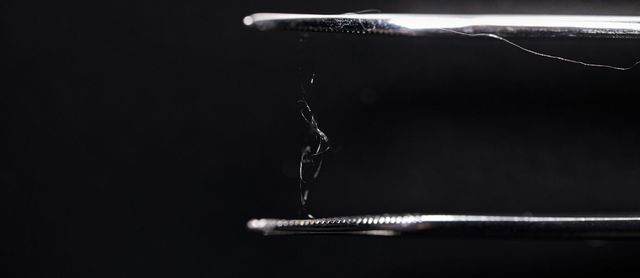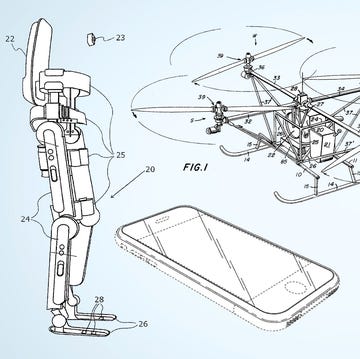- A new material could provide the sweet spot of strength and flexibility needed for a material to replace plastic.
- The material is a hybrid, consisting of wood glucose and artificial spider's silk.
- Even a dent into plastic's widespread use could make for noticeable environmental gains.
In the world of material engineering, two key concepts are material strength and extensibility. Strength is mostly self-explanatory, but extensibility allows for a material to be extended or stretched. Traditionally, the two are trade-offs: a stronger material, like steel, won't have the extensibility of, say, rubber. But scientists from Aalto University and the VTT VTT Technical Research Center of Finland say they've developed a new bio-based material that can capture both.
The material stems from very carefully gluing together wood cellulose fibers and a silk protein found within a spider's web.
"We used birch tree pulp, broke it down to cellulose nanofibrils, and aligned them into a stiff scaffold," says Pezhman Mohammadi, a research scientist at VTT, in a press statement. "At the same time, we infiltrated the cellulosic network with a soft and energy dissipating spider silk adhesive matrix."
The team describes its end result as a "very firm and resilient material which could be used in the future as a possible replacement for plastic, as part of bio-based composites and in medical applications, surgical fibers, textile industry and packaging."
While the silk used within the material is an exact replica of what a spider secretes, no animals were used in the making of the material. Rather, it was made with bacteria that had synthetic DNA.
"Because we know the structure of the DNA, we can copy it and use this to manufacture silk protein molecules, which are chemically similar to those found in spider web threads," says Markus Linder, a professor at Aalto University, in the press statement. "The DNA has all this information contained in it."
The new material is very promising. There's a potential for a wide variety of uses, and it's also biodegradable. That means it wouldn't harm the Earth in the same ways plastic currently does. And there wouldn't be an equivalent to the microsplastic pieces that have come to spread around the globe.
"Our work illustrates the new and versatile possibilities for protein engineering. In the future, we could manufacture similar composites with slightly different building blocks and achieve a different set of characteristics for other applications," says Pezhman.
The next step with the material is recreating it, and trying to build things. "Currently, we are working on making new composite materials as implants, impact resistance objects, and other products,” says Pezhman.
David Grossman is a staff writer for PopularMechanics.com. He's previously written for The Verge, Rolling Stone, The New Republic and several other publications. He's based out of Brooklyn.












